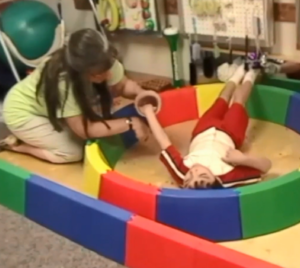Communicating with the Learner
Non-Verbal Communication

One of the great challenges of interacting with a child who is significantly developmentally delayed is the challenge of communication. Because many of these children have no spoken language, they are more reliant on communicating through other forms. For example their expressive language tends to be through body movements and behavioral signals and cues. Touch or tactile signals and symbols are very important supports to their understanding what is said to them even if they have normal hearing.
Description: How do children with special needs communicate? They tend to use non-verbal communication. It’s the adult’s responsibility to really pay attention to those cues, and try to figure out what a child means by them.
Talking During an Activity
Our tendency, in fact our training, has led us to believe that children with visual impairments need a steady stream of an adult talking in order to learn. While the development of language and communication skills is critical for individuals who may be non-verbal or have only a limited verbal ability, there is a time and place for talking. If you think about trying to learn something new or examining an unknown object, someone else’s comments can be distracting and break your concentration. The same is true for all learners, no matter what disabilities they might have.
Patty Obrzut explains why one of the basic principles of Active Learning is not to talk while the child is actively engaged in exploration or experimentation with objects and activities.
Description: Talking can be a distraction during an activity. It can move the focus from the activity to the adult. When you’re playing with a child, you talk in the pauses of the activity, briefly and quickly, and then you let the child explore for themselves.


